Brown Butter is the secret ingredient you need in your baking toolkit. Full of irresistible nutty flavor, it is the easiest and most effective way to elevate any dessert recipe.
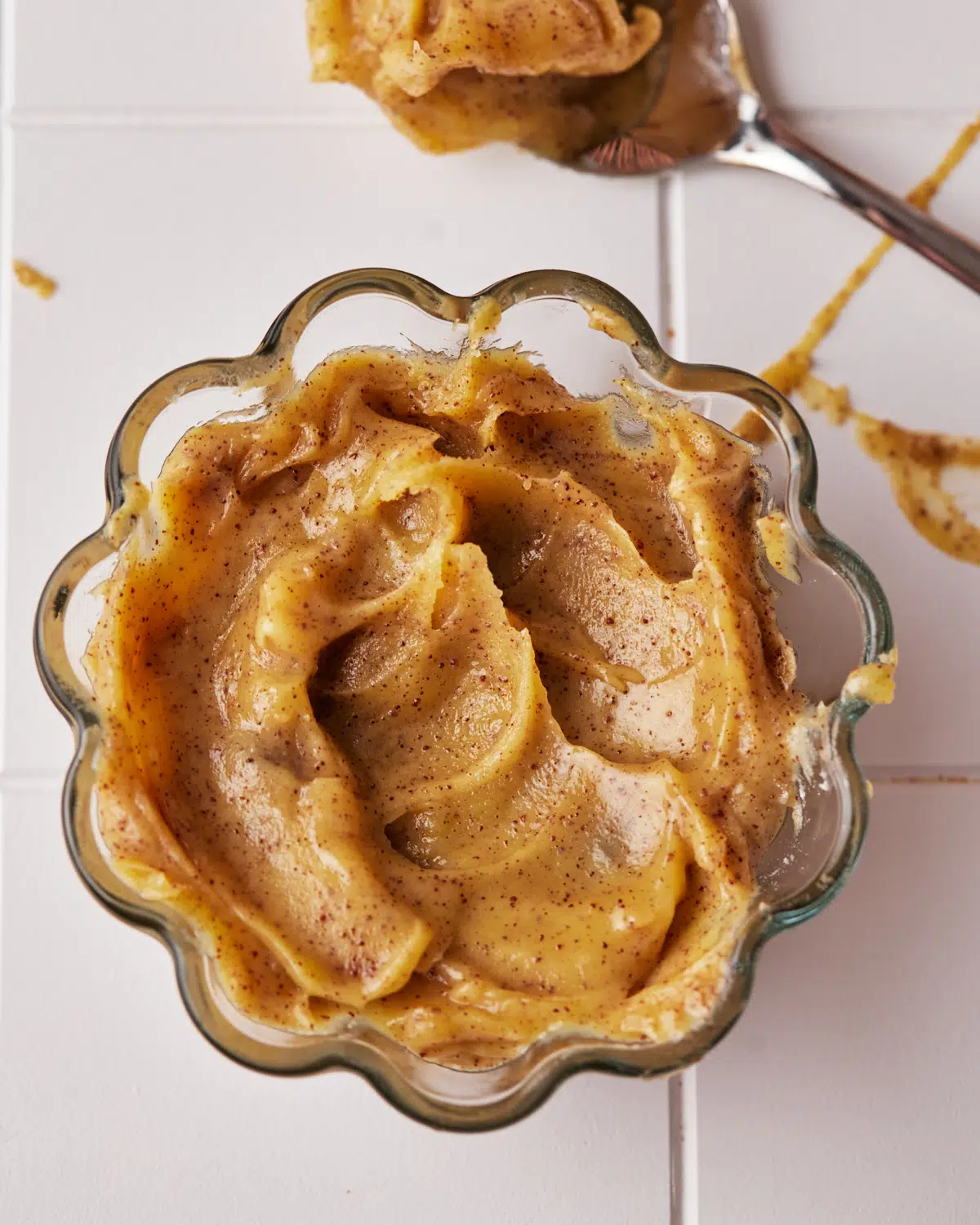
I am convinced there is no better way to take any ordinary recipe and make it spectacular than by browning your butter. It's so quick and easy to just add this one extra step to the start of any recipe, and yet it brings so much additional flavor and depth to the finished goodies.
It might seem daunting if you've never browned butter before, but I promise you after trying it once you'll be asking yourself why you haven't been using this liquid gold for years!
Brown butter has a very distinct aroma and flavor, but most describe it as a kind of nutty, caramelized flavor. It's great in any baked goods, I particularly like it in my Brown Butter Banana Bread, Brown Butter Pecan Cookies, and the Brown Butter Cream Cheese Frosting on my Chai Cake. You can use it in baking or in savory dishes. It's so delicious that sometimes I even like to just spread it on toast or a bagel.
Jump to:
- Ingredients
- How to Make Brown Butter
- Equipment
- Storage
- How long does it take to brown butter?
- What does brown butter do in baking?
- What can I use brown butter for?
- What does brown butter taste like?
- How much butter should I use?
- How to substitute regular butter for brown butter in a recipe
- Where does brown butter come from?
- Brown Butter Recipes
- Recipe
Ingredients
Butter - Just butter. That's the only ingredient! I recommend using unsalted butter, firstly so you can control the salt in whatever you are adding it to, but also because the butter with burn more easily with salted butter.
When it comes to choosing what type of butter to use, it can be any kind you like. Generally speaking, the best quality butter will produce the best results, but ultimately any butter will brown. I like to use Kerrygold butter when I'm baking.
How to Make Brown Butter
This brown butter recipe could not be more simple. Just follow these simple steps for an easy way to level up your butter game in about 5 minutes.
- Step 1: Chop your stick of butter (or whatever quantity you are using) into chunks and put it in a frying pan or saucepan.
A shallow, light-colored pan is best as it will be easiest to monitor the color of the brown butter, but this will work in any pan - you just need to be more diligent with checking on the color. Melt butter over medium heat, stirring occasionally.
- Step 2: As the butter melts, it will start to bubble up and make a crackling sound - this is the sound of the water content in the butter boiling and evaporating. It will continue to do this for a little while as all the water evaporates, keep stirring every now and then.

Cut the butter into smaller chunks and place in the pan.
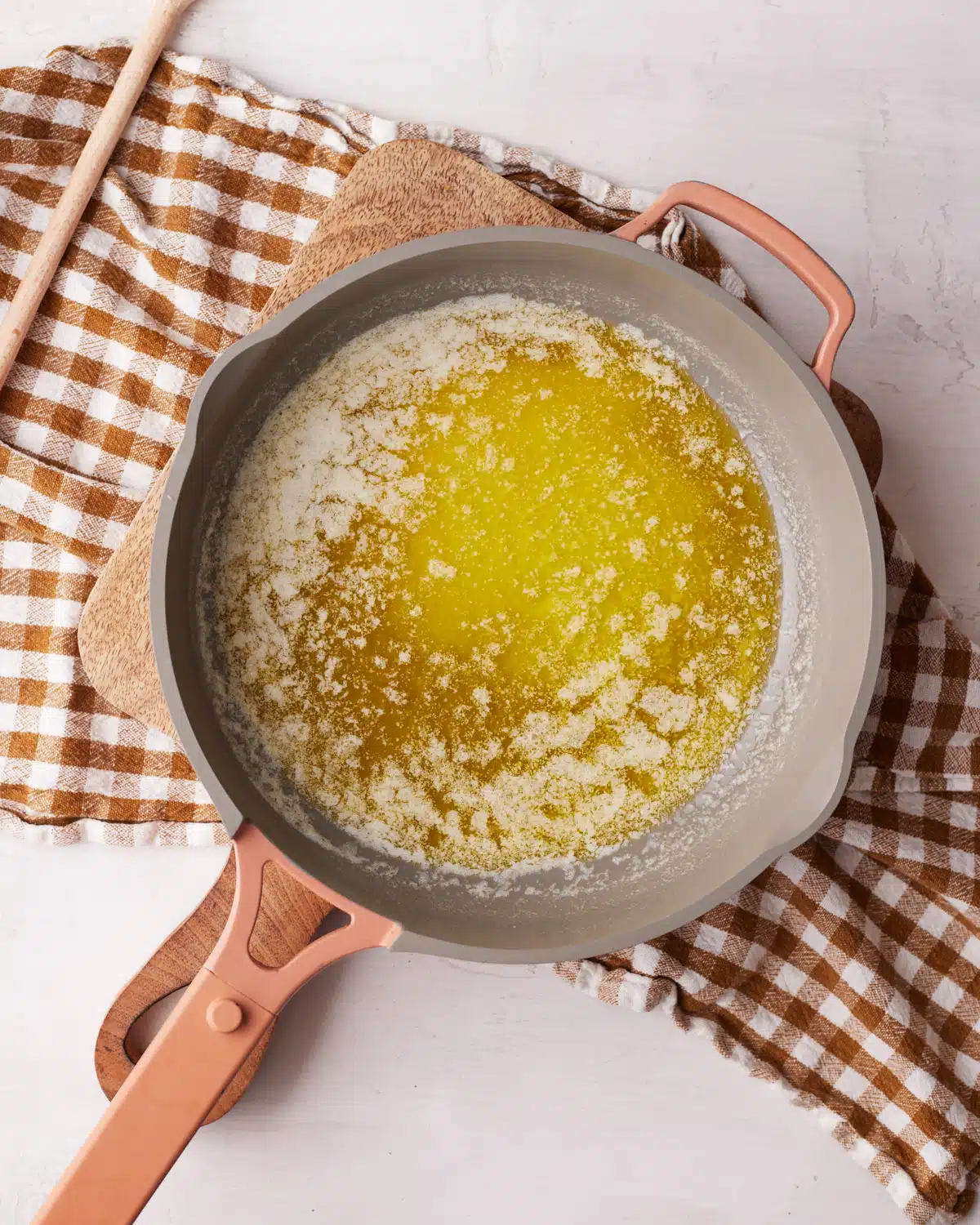
As the butter melts, it will start to bubble and make a 'crackling sound'.
- Step 3: Once the crackling sound subsides, the browning process starts happening quite quickly. You'll see the butter start to turn a deep golden brown color, keep stirring gently, and keep a close eye on it at this point as the color change is fast and it can very suddenly from browned to burnt!
As the butter browns, you'll notice a foam starting to form on top, just gently scrape the surface of that to the side with a wooden spoon so you can keep checking on the color.
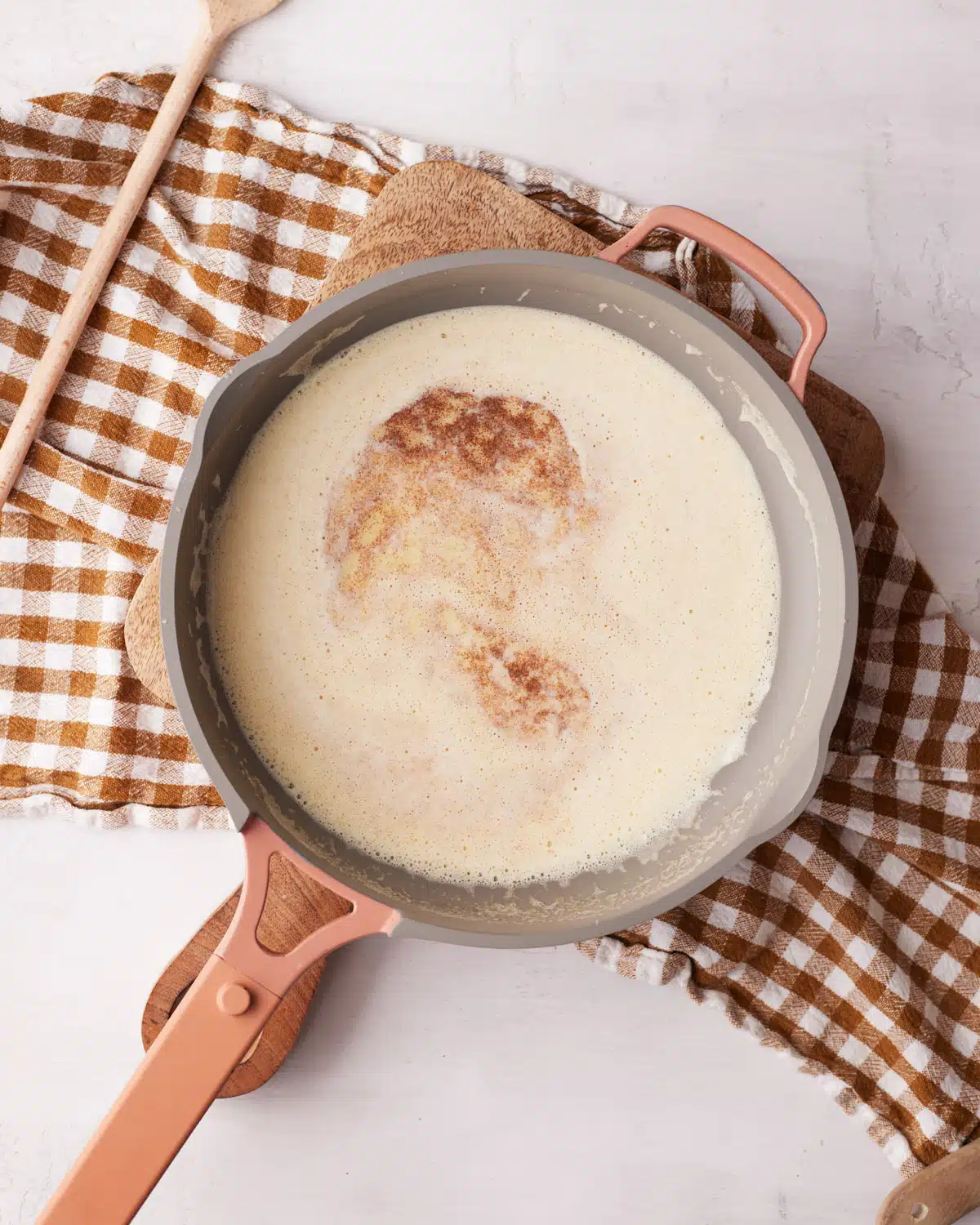
A foam will form on top of the butter after the crackling subsides and it starts to brown.
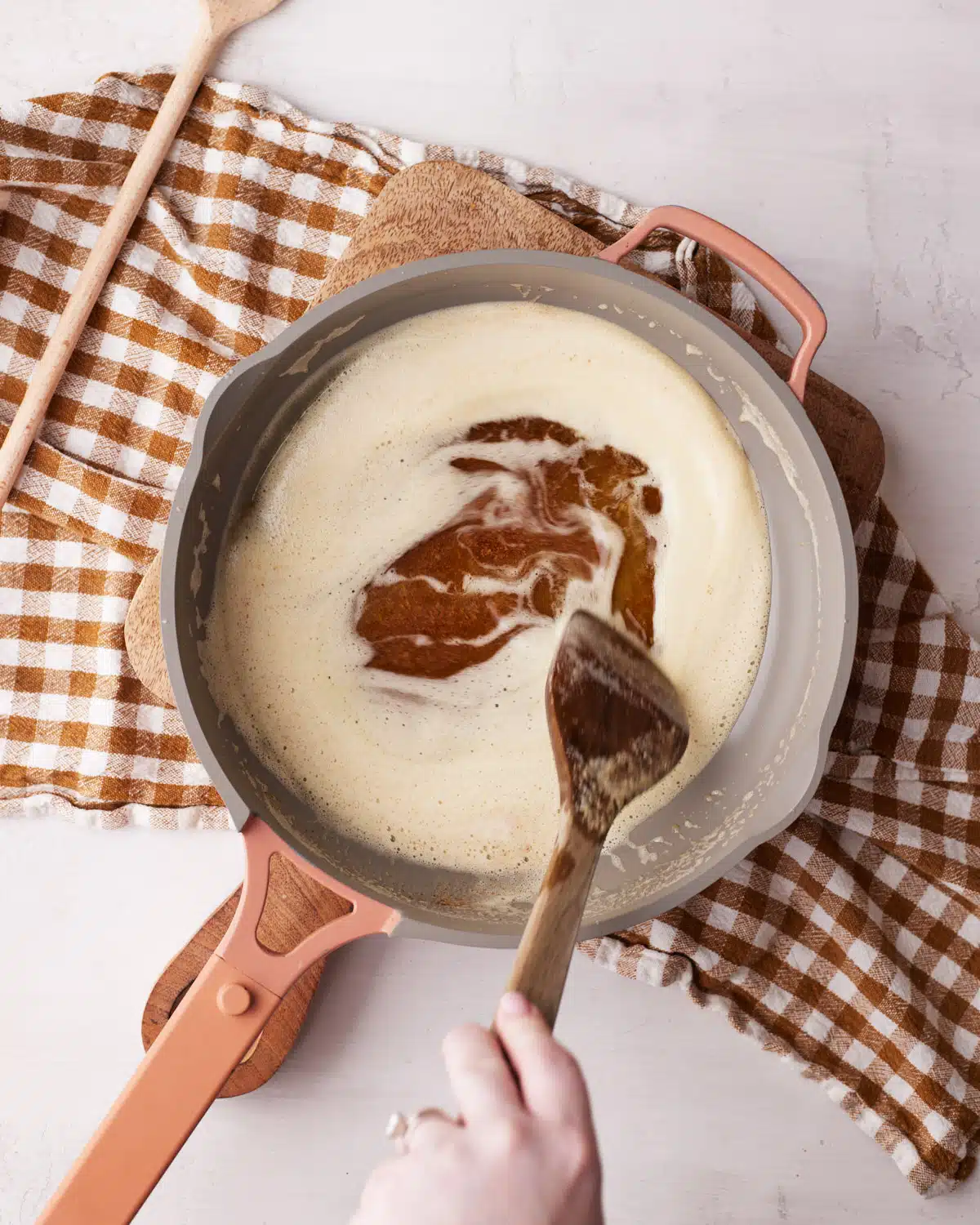
Use a wooden spoon to move the foam to the side so you can check on the color.
- Step 4: When the butter is toasty brown and you can smell that gorgeous nutty aroma, it's ready! Remove from the heat and transfer to a heatproof bowl. It is important to transfer it right away as the residual heat in the pan may continue the cooking process and could burn your butter.
Important: Make sure you scrape the bottom of the pan to get all the little brown specks that gather at the bottom. Whatever you do, not discard these! These are the milk solids and it is what will give your brown butter most of its flavor.
- Step 5: If you are using your browned butter immediately in a recipe that calls for melted butter, you can pour it straight in and use it right away.
If you need it at room temperature for your recipe, let the butter cool on the countertop until it solidifies. Once it is in a solid state again, mix it thoroughly to disperse all the brown flecks throughout the butter evenly.
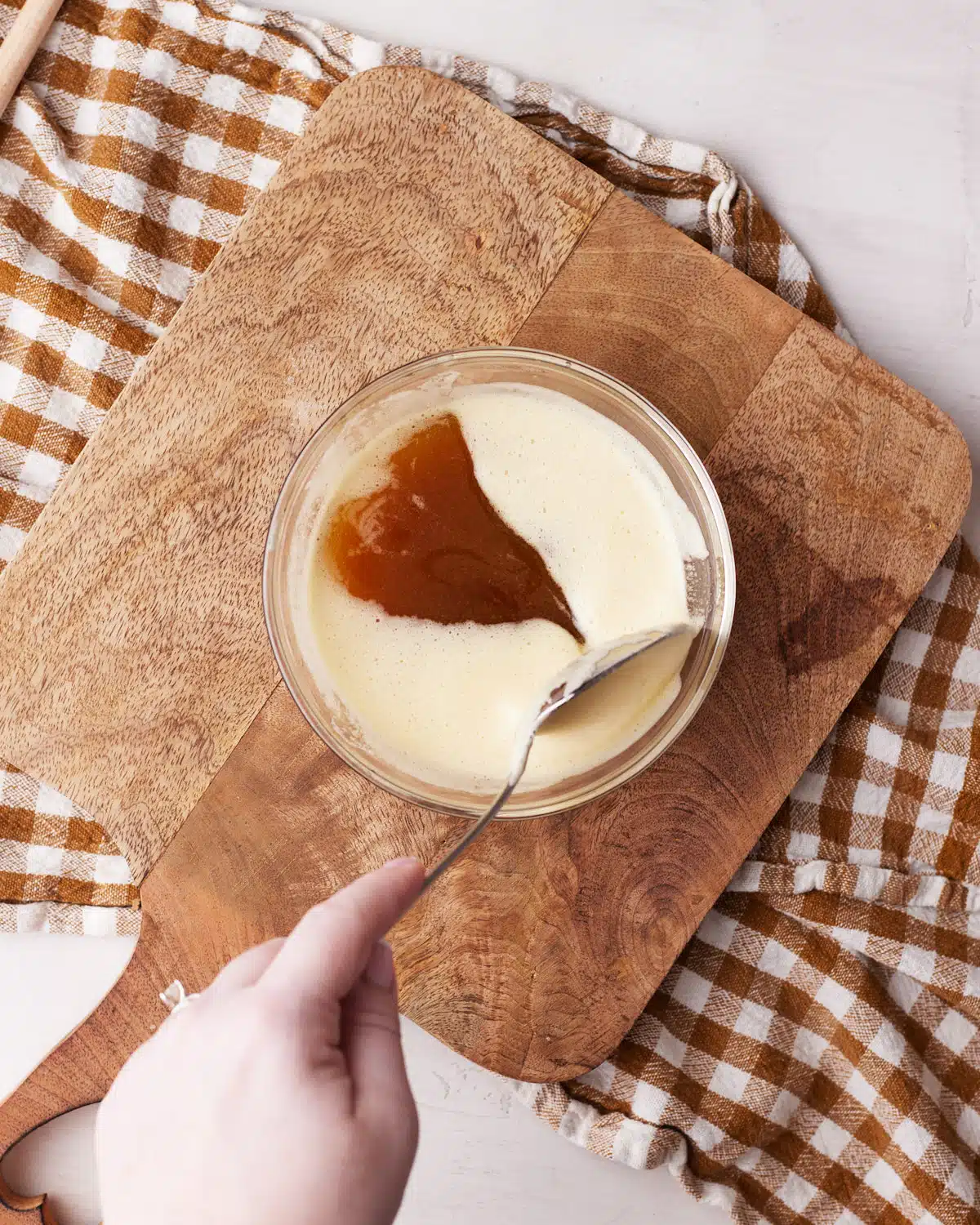
Transfer to a heatproof bowl right away to prevent any further browning or burning.
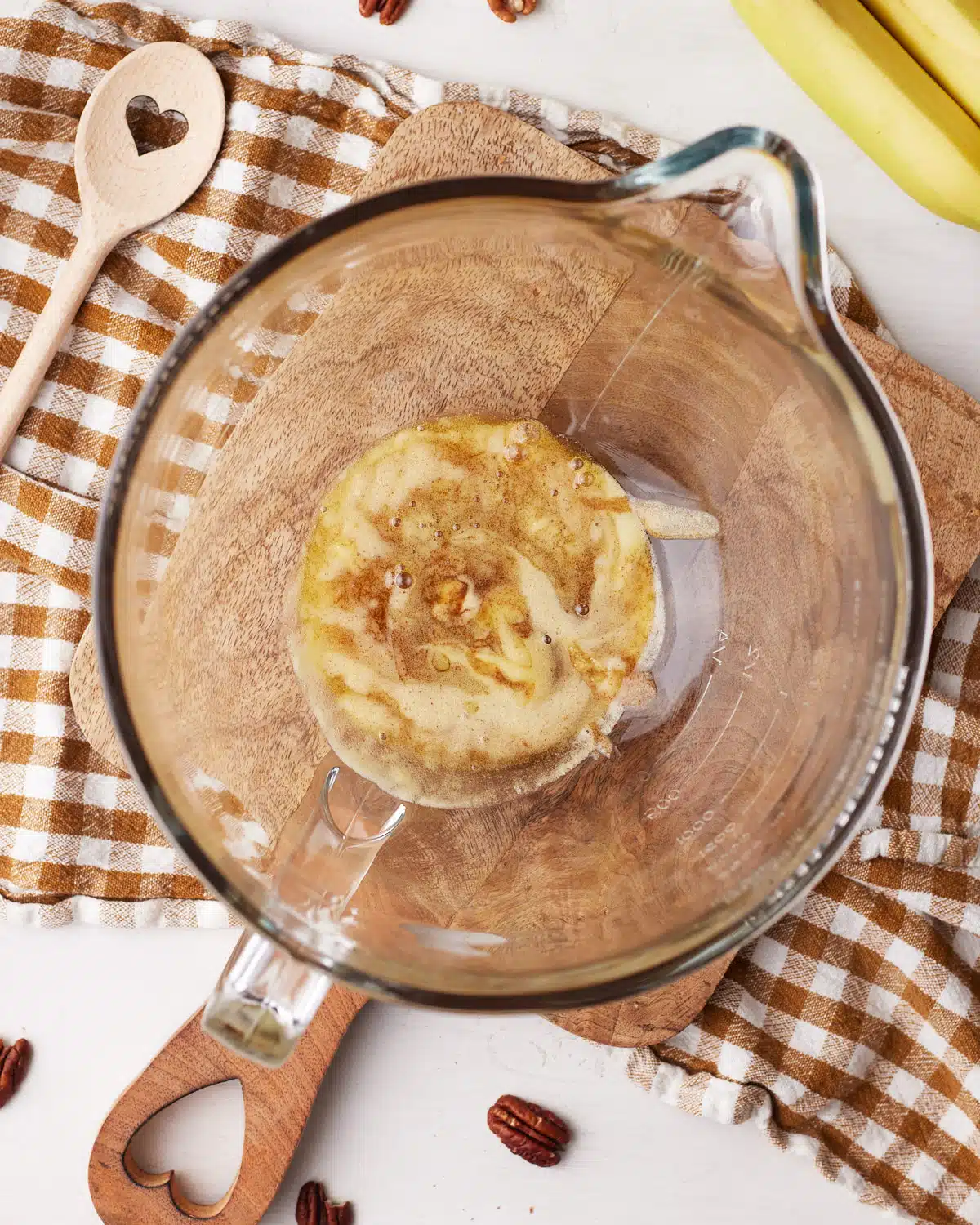
If your recipe calls for melted butter, you can use it immediately.
Equipment
- Light-colored Saucepan or Frying pan - the light color is to make it easier for you to see the color change of the butter. If you only have dark pans, that's okay - just make sure you are regularly picking up a bit of the butter in a spoon to check the color.
Storage
Store your browned butter in a mason jar or any airtight container and keep it in the fridge. It will be good in the fridge for 5 days.
You can also freeze your browned butter. I like to pour it into an ice cube tray and freeze little cubes of brown butter to throw into a hot pan when cooking and add a little flavor boost. Just make sure you disperse those brown butter solids well before dividing up the butter.
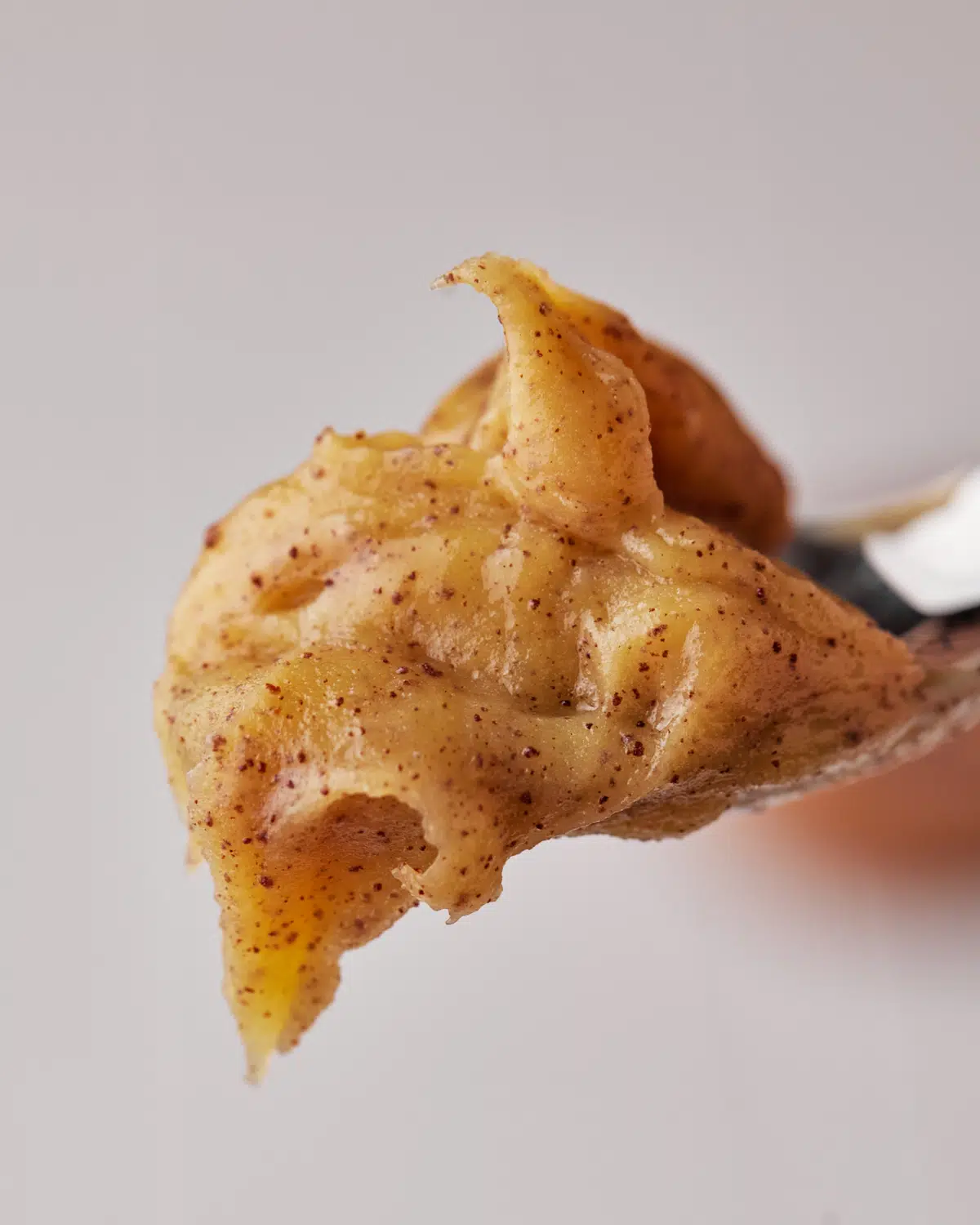
How long does it take to brown butter?
The whole process should only take about 5 - 8 minutes, depending on the amount of butter you are browning and the temperature of your stovetop.
What does brown butter do in baking?
The main reason for using browned butter is that it adds depth and a more complex flavor to your baked goods. The additional flavor that is gained from just one additional step is well worth the few extra minutes added on to the recipe time.
From a technical perspective, browning the butter does remove about 15% of the moisture content, so you may need to compensate for this in your recipe by adding a tablespoon or two more liquid to compensate. Other than that it can be used the same as regular butter in any recipe.
What can I use brown butter for?
You can use brown butter for SO many things! Here are just a few suggestions for some of the great ways to use this simple technique to bring more deliciousness into your life.
- In Baking - Of course, my number one use for browned butter is in baking recipes. It's wonderful in cakes, such as my Brown Butter Banana Bread. The first time I tried browned butter it was in brown butter chocolate chip cookies and I could not believe the difference it made to a very basic recipe.
- In Cooking - Use the French technique of putting it in savory dishes. Brown butter sauce with pasta is just divine, and tastes way more complicated than it really is!
- As a topping - Spread your brown butter on toast, bagels, or even on scones or breads.
- In Frosting - One of my favorite ways to use it is to make buttercream, like my Brown Butter Cream Cheese Frosting. It takes any frosting recipe to a whole new level, plus the little browned bits show through in the frosting and look so pretty and special.

What does brown butter taste like?
The nutty browned butter flavor is far superior to the flavor of regular butter. It's a toasty, almost caramel flavor.
If you want to get nerdy about it, the flavor comes from something called the Maillard reaction, which is the chemical reaction that occurs in foods between the amino acids (the building blocks of proteins) and reducing sugars in the presence of heat. This is what gives you delicious flavors in browned foods like toasted marshmallows, fried dumplings, and caramelized vegetables.
How much butter should I use?
You can brown as much butter as you like at a time (frying pan permitting). If you're using in a recipe, you can use the exact same amount as the recipe calls for, then just replace some of the liquid as mentioned above.
How to substitute regular butter for brown butter in a recipe
Whether the recipe calls for regular melted butter or regular room temperature butter, you can use browned butter in its place for that extra rich flavor. If it calls for melted butter, you can pour the butter into the recipe right away after browning it. If it calls for room temp butter, you will need to make the browned butter a little ahead of time to let it re-solidify. Just make sure you give it a thorough mix to disperse those delicious milk solids (the little brown bits) evenly throughout the butter.
If you are making a recipe that is quite sensitive to consistency changes, you may need to replace some of the moisture that gets removed in the browning process. The butter loses about 15% of its liquids, so you'll want to add an additional 1 tablespoon of extra liquid for each cup of butter you are replacing.

Where does brown butter come from?
Brown butter originates from France, it's a very old technique used in traditional French cooking. In France, browned butter is referred to as beurre noisette, which literally translates to hazelnut butter - this is because of the delicious nutty aroma that brown butter gives off. It was originally used in mainly savory recipes but is now common across the world in savory and sweet dishes.
Brown Butter Recipes
Try your new favorite type of butter in some of these recipes!
Recipe
Brown Butter
Ingredients
- 2 sticks Unsalted Butter 227g
Instructions
- Cut the butter into small pieces and place into a light-colored pan over medium heat.2 sticks Unsalted Butter
- Melt the butter, stirring occasionally. Once melted, it will start to bubble and make a crackling sound - this is the sound of the water evaporating from the butter.
- Once the crackling subsides, the color will start to change quite quickly, it will go a golden browm color - keep watching it and stirring gently until it is a deep golden brown and you can smell the delicious nutty aroma.
- Remove from the heat and transfer to a heatproof bowl immediately, make sure you scrape the bottom of the pan to get all the little brown specks out - these are the milk solids and they are what add all the flavor to the brown butter.
- If you are using in a recipe that calls for melted butter, you can use the brown butter immediately. If you need room-temperature butter, let it sit on the counter until it solidifies again. Give it a thorough mix once it is solid to disperse all the brown flecks of milk solids evenly throughout the butter.

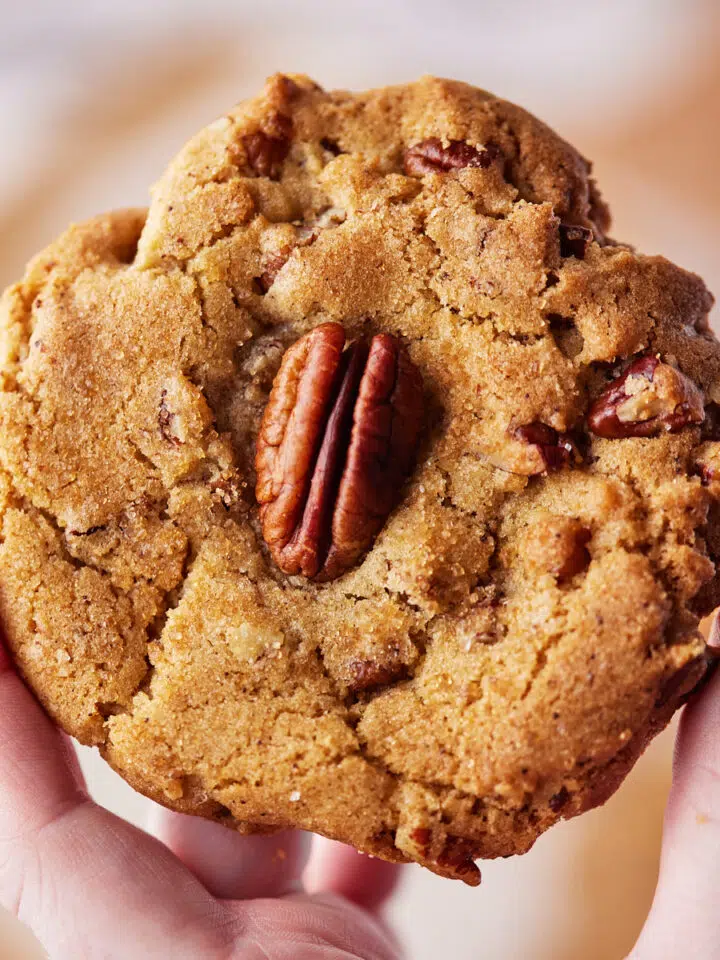
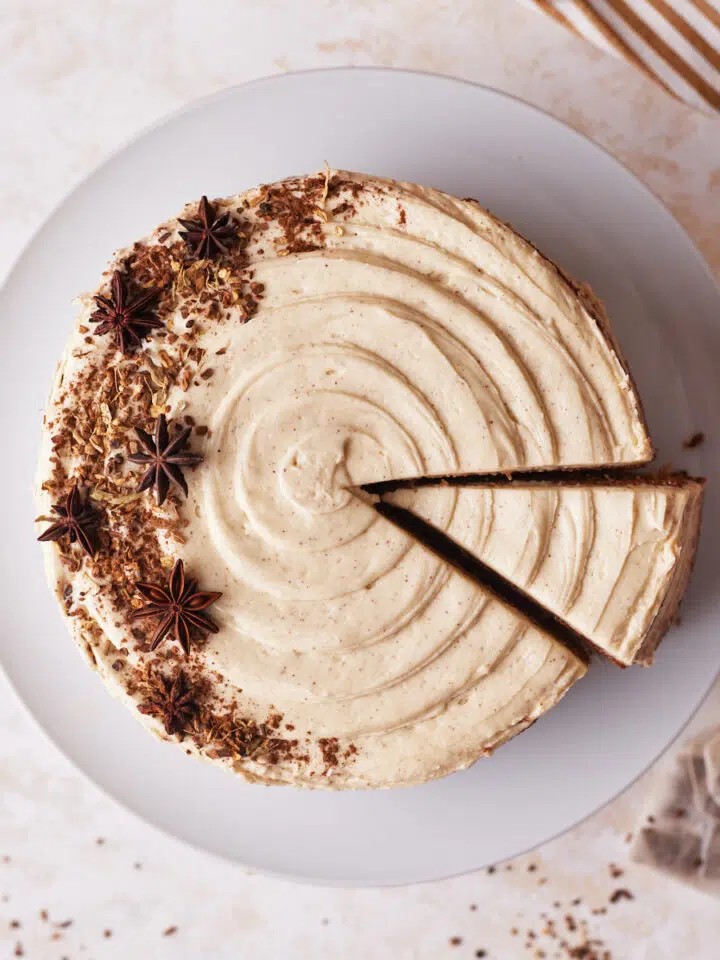
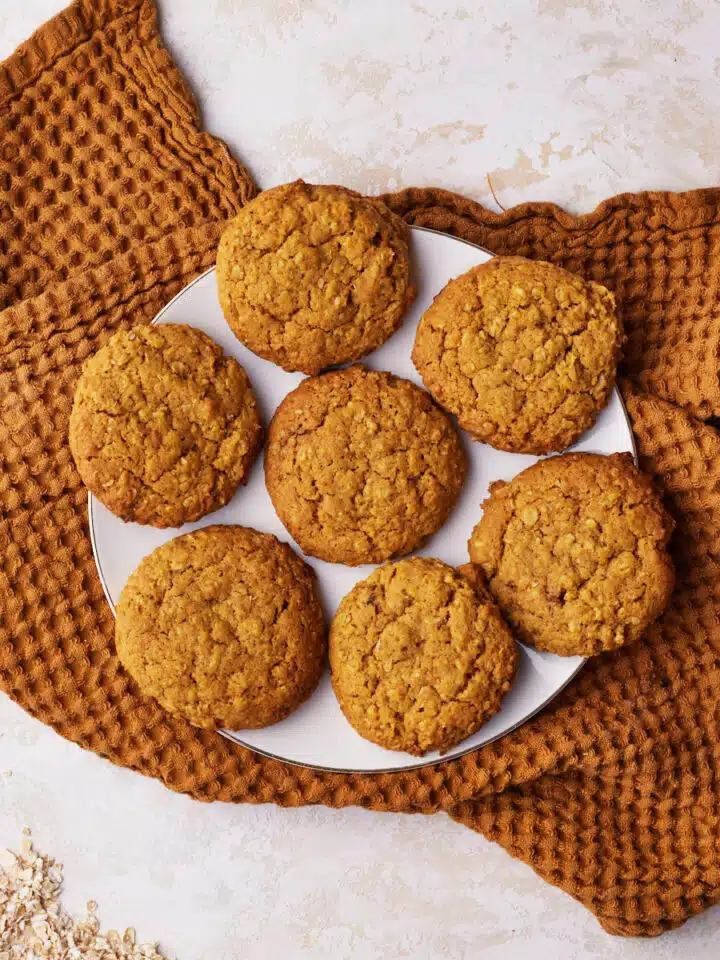
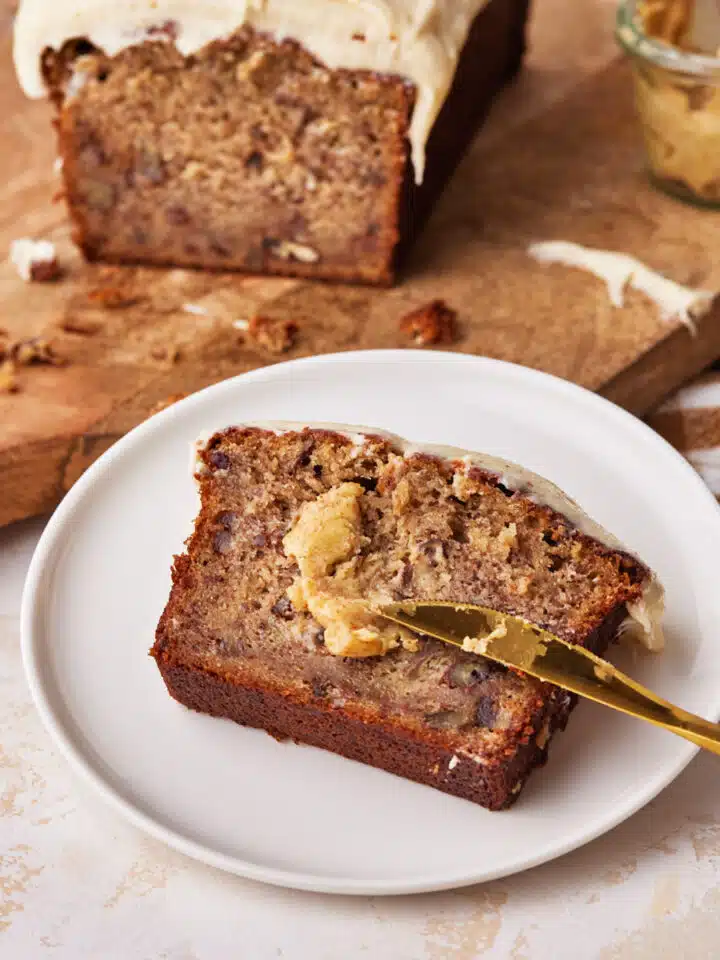
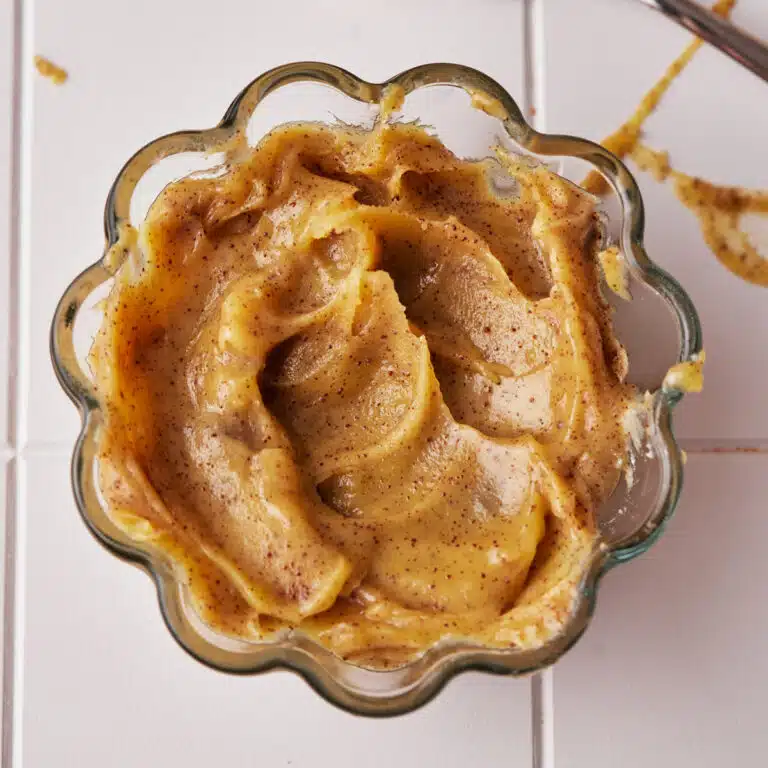

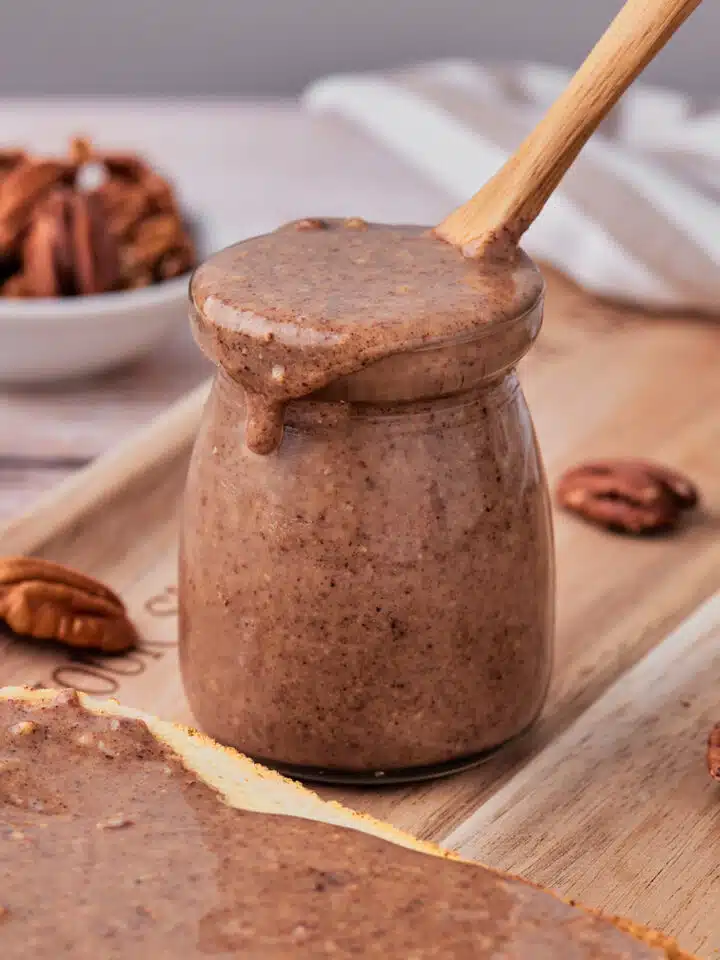
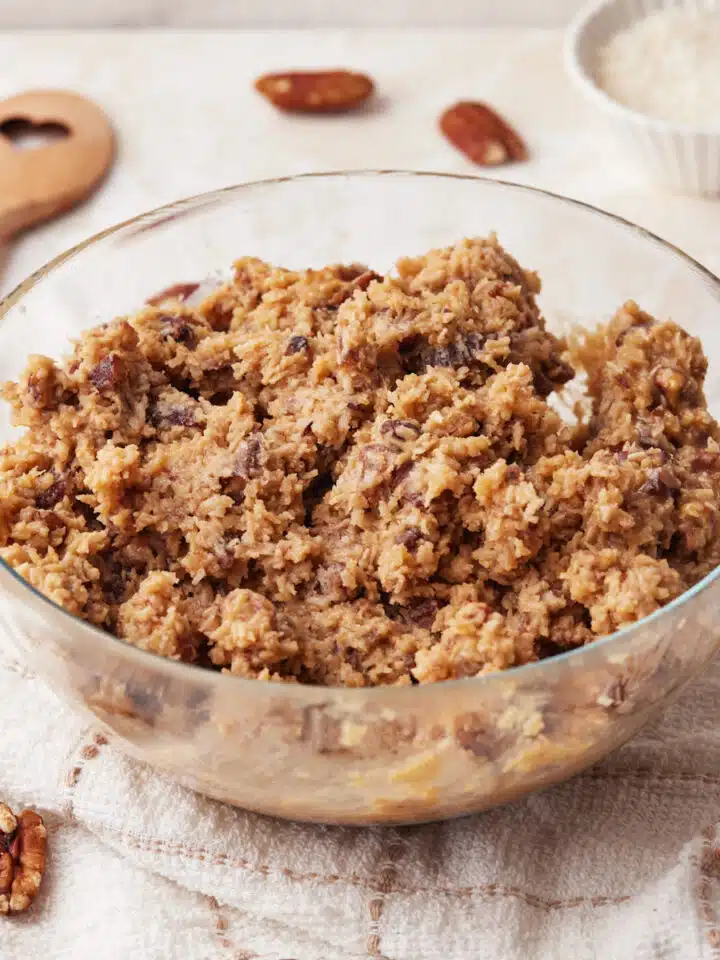
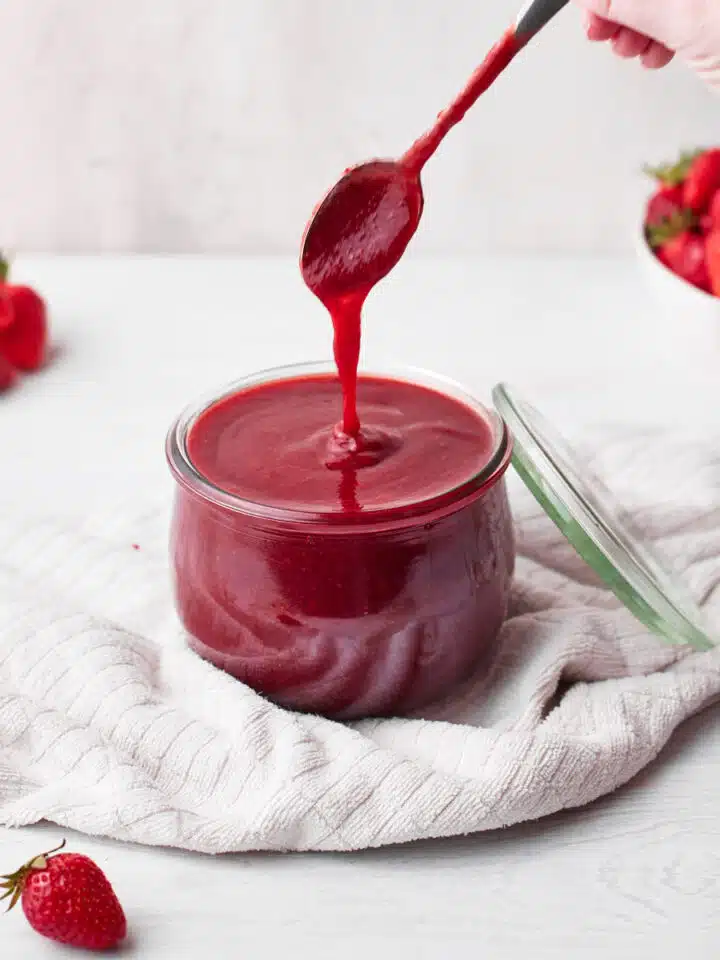
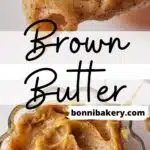
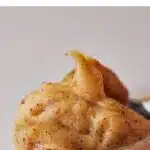
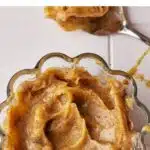
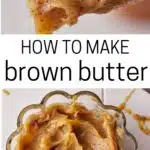
Claudia
Hi Jules! I made brown butter for the first time following your recipe. It was easy, and I couldn't believe how much of a difference it made. I mixed it with mascarpone, inulin powder, vanilla, and one tablespoon of maple syrup to make a sugar-free frosting for my GF chai cake. It was out of this world good! Thank you, I love your website.
Jules Grasekamp
Hello again!
I agree, browning the butter is such a quick extra step but makes a world of difference - so happy you enjoyed it 🙂
Jules